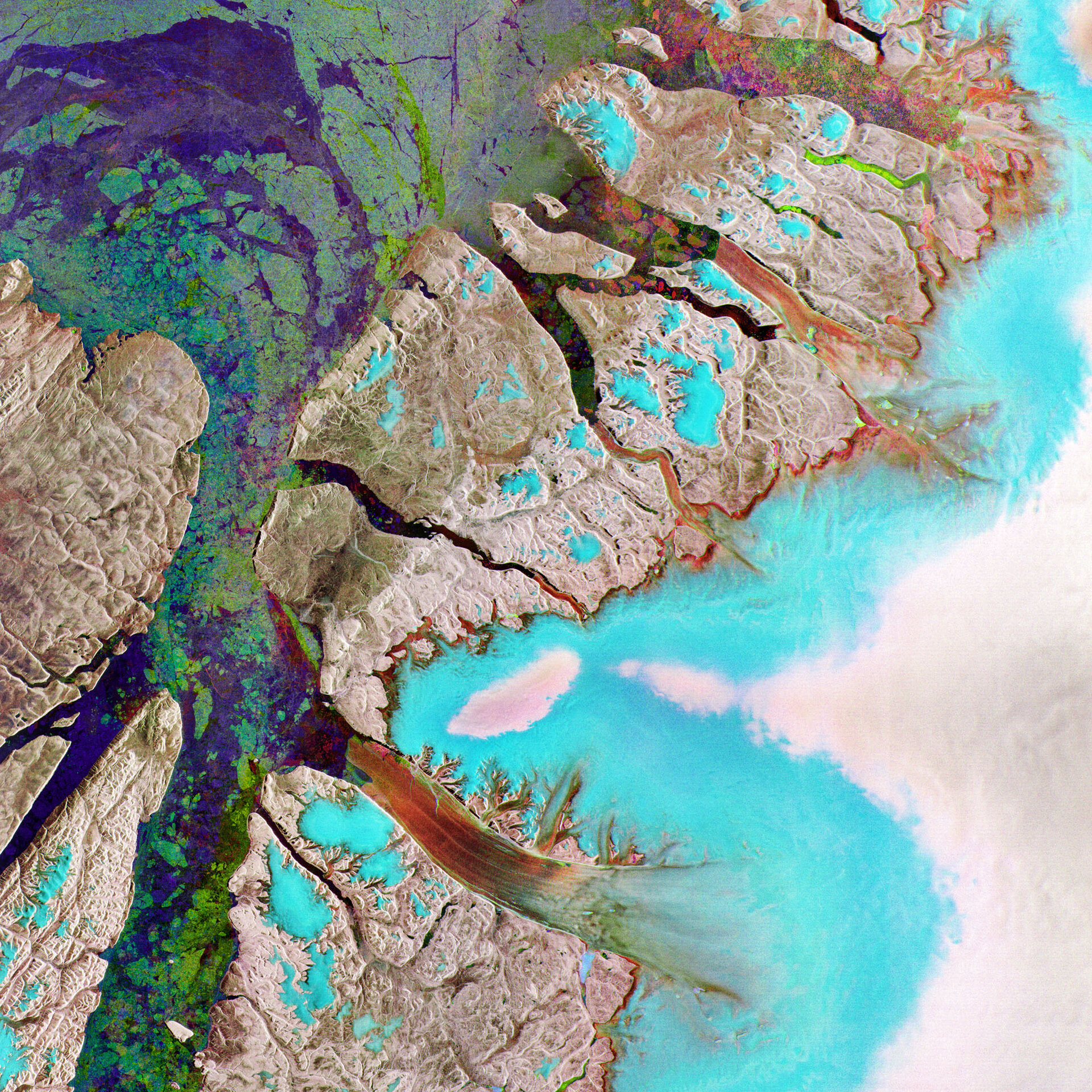Earth from Space: Ellesmere Island and Greenland
This Envisat radar image features the northeastern tip of Ellesmere Island (left) in the Canadian Arctic and northwestern Greenland (right) – the world’s largest island.
The water (indicated by purple and green colours) pictured in the lower part of the image is Nares Strait. The northernmost part of Nares Strait is the Robeson Channel, which empties into Lincoln Sea (upper left corner of image), part of the Arctic Ocean.
The aqua blue and white-coloured areas on the right side of the image show a portion of the Greenland Ice Sheet, the second largest concentration of frozen freshwater on Earth after the Antarctic Ice Sheet.
In reddish colours, the Northern Hemisphere's longest-floating glacier, Petermann, can be seen stretching across the centre of the lower part of the image and emptying into Nares Strait. Petermann Glacier lost a 29 km² between 10 July and 25 July 2008.
If the Greenland Ice Sheet were to melt completely, the global sea level would increase by up to 7 m, making it vital to monitor the height of ice sheets and the rate at which they are melting.
Using satellite data collected between 1996 and 2005 by ESA’s ERS-1, ERS-2 and Envisat and Canada’s Radarsat-1, scientists found Greenland’s southern glaciers were dumping twice as much ice yearly into the Atlantic Ocean as they did in 1996.
Another study using radar altimeter data from ERS-1 and ERS-2 from 1992 to 2002 found the Greenland Ice Sheet gained more ice from snowfall at high altitudes during this decade than it lost from melting ice along its coast.
The combined findings of these studies suggest global warming is affecting the ice sheets. A warmer environment builds up water in the atmosphere which can then increase snowfall over Greenland. At the same time, however, the oceans are warming causing the outer sheets of ice to melt.
There is no colour in a standard radar image because they represent surface backscatter rather than reflected light. This composite is made up of three Advanced Synthetic Aperture Radar (ASAR) images acquired on different dates, with separate colours assigned to each acquisition to highlight differences between them.
The colour green relates to an acquisition on 29 May 2008, red to one on 7 August 2008 and blue to one on 16 October 2008.






